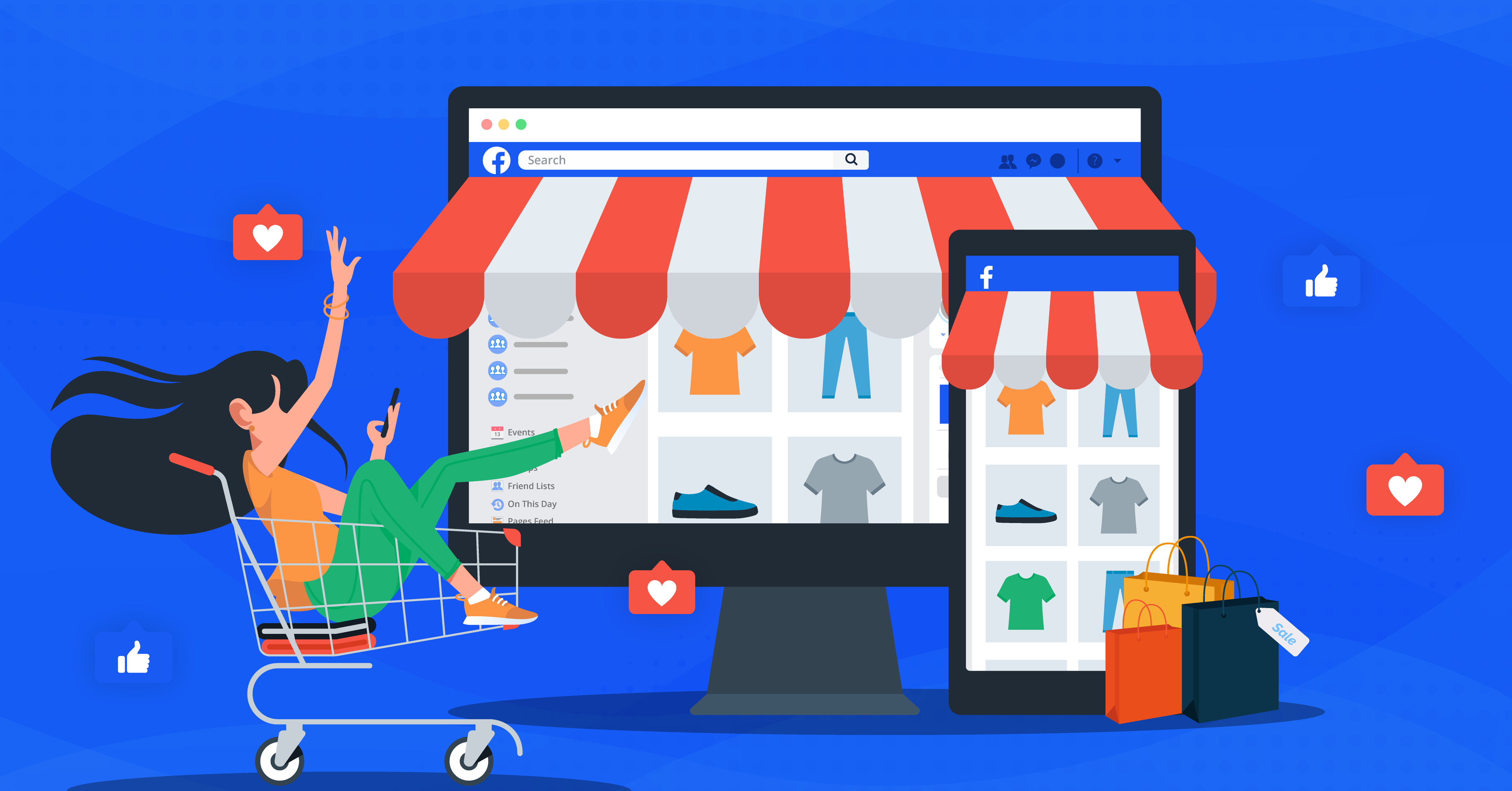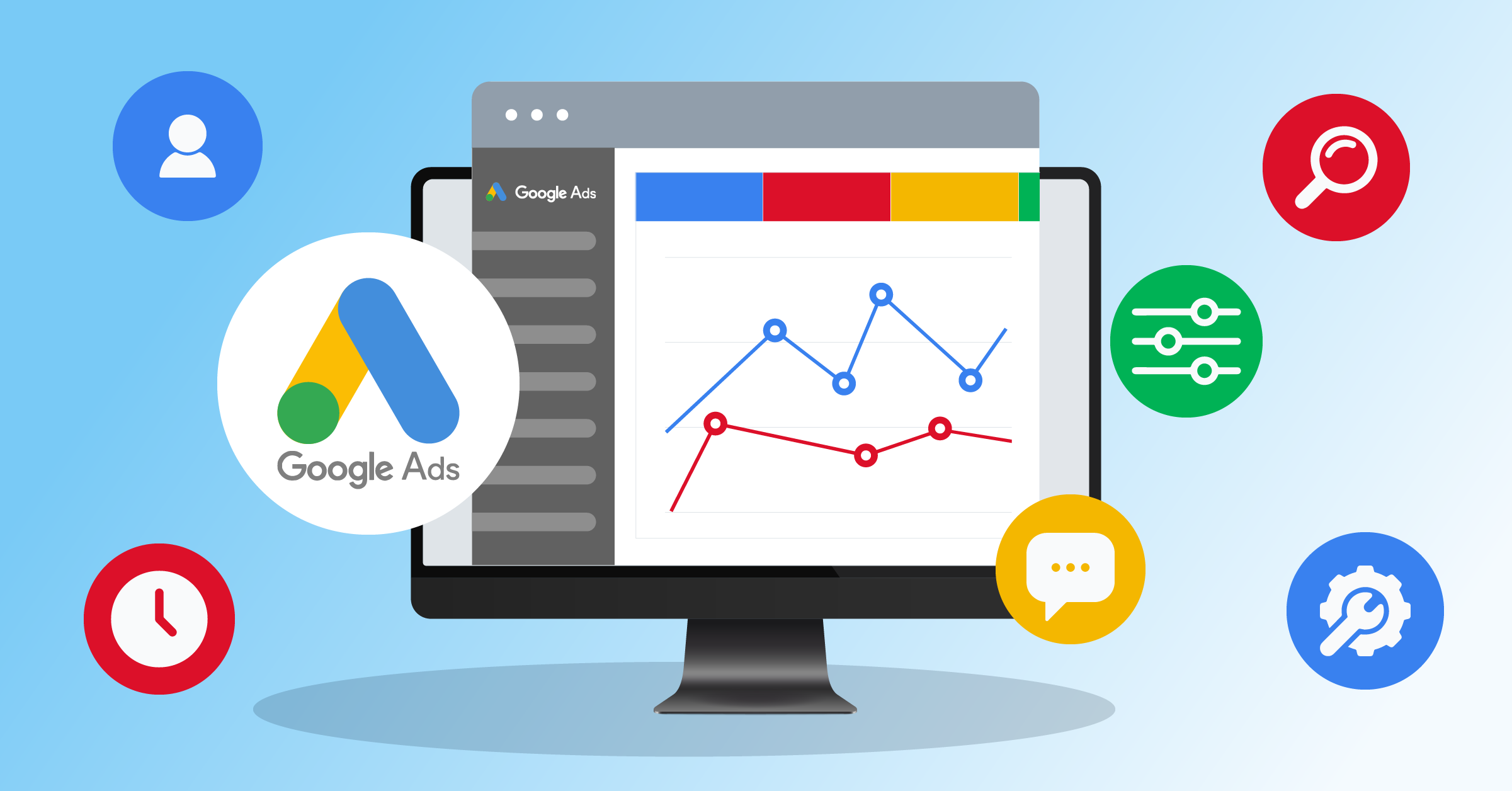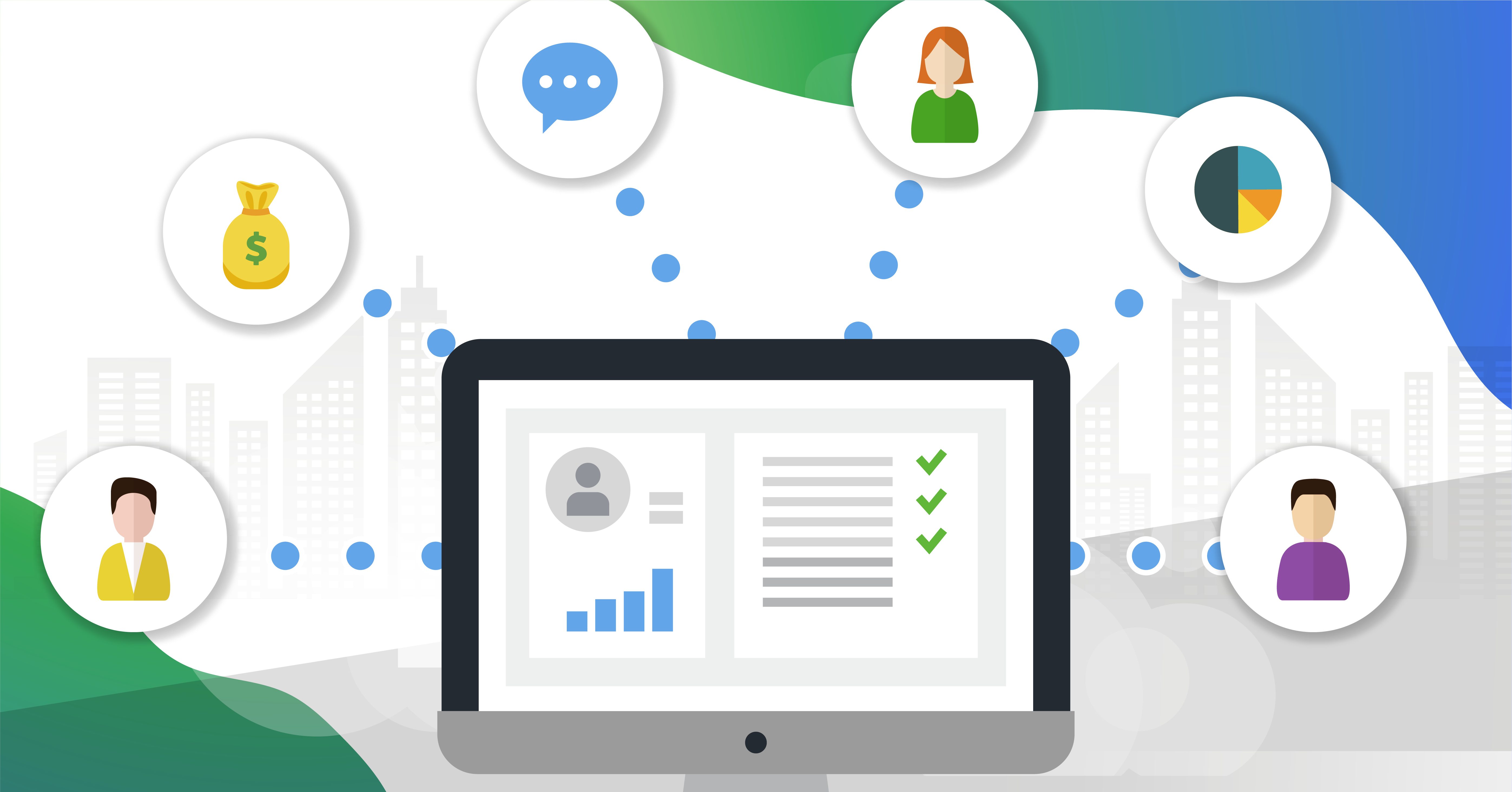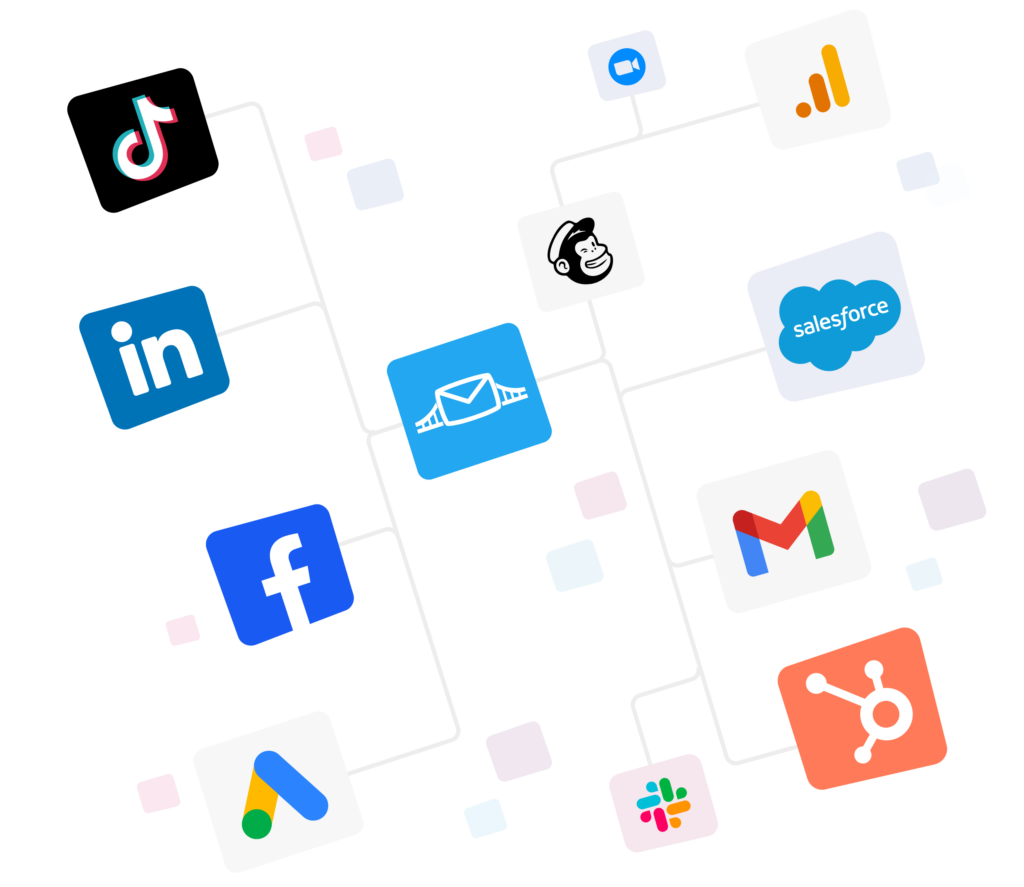
In the dynamic world of digital marketing, the cost of advertising on platforms like Facebook and Google can quickly add up, eating into your marketing budget and affecting your profitability.
For example, Facebook advertisers pay an average of $0.26 to $0.30 per click, $1.01 to $3.00 per 1,000 impressions, $0.01 to $0.25 per reaction, and $0.01 to $5.00 per install, with monthly spending ranging from $100 to $500.
That’s why it’s more crucial than ever for advertisers to find effective strategies to optimize their ad spend without sacrificing reach or performance.
This guide will delve into how to reduce advertising costs on both Facebook and Google, offering insights on how to reduce cost per click (CPC) and enhance your return on ad spend (ROAS) with automated solutions like LeadsBridge integrations.
Why it’s important to reduce online ads costs
High advertising costs can put a real squeeze on your budget, particularly if you’re running a small or medium-sized business. When you’re shelling out too much for ads, it can mean you’re not able to invest in other important areas of your business, like developing new products, providing good customer service, or running other marketing campaigns.
Enhance ROI and profit margins
By cutting down on online ad expenses, you’re not just saving money – you’re boosting the return on investment (ROI) for your marketing efforts. This means a lower cost per acquisition (CPA), which translates to fatter profit margins. And with that, you’ve got more resources to plow back into the areas that pave the way for lasting success and innovation.
Get a competitive advantage in a crowded market
In today’s cutthroat digital world, every penny saved on advertising is a win. By optimizing ad spend, businesses can channel more resources into creative strategies and targeted campaigns, outshining competitors who are less savvy with their advertising budgets. This can translate to a larger slice of the market and greater brand recognition.
Gain flexibility in marketing strategies
Lower ad costs mean you can be more flexible in your marketing strategies. You can experiment with different ad formats, target audiences, and messaging without the fear of overspending. This flexibility is crucial for staying agile and responsive to market changes, allowing you to adapt quickly and effectively.
Build a sustainable business model
Sustainable business models are all about being efficient and managing costs. When you cut down on online ad expenses, you’re shoring up your financial base. This isn’t just about riding out economic storms; it’s about having the resources to keep growing and innovating for the long haul.
Meet budget constraints
It’s no secret that many businesses are working with tight budgets. By cutting down on advertising costs, companies can keep within these limits and still reach their marketing objectives. This is especially crucial for startups and small businesses, who need to make every dollar count in order to succeed in a competitive market.
How to reduce Facebook Ads costs
One of the most effective strategies to cut down on Facebook ad expenses is to optimize your audience targeting. By homing in on the individuals most inclined to interact with your content, you can boost conversion rates and trim costs. Leverage the platform’s detailed targeting options to tailor your audience by demographics, interests, and behaviors.
1. Leverage Lookalike Audiences
Lookalike audiences can be a game changer to help reduce your Facebook Ads costs. This feature lets you zero in on users who resemble your current customers. By honing in on these promising leads, you can up your chances of conversions and cut back on what you’d spend on less effective ads.
Explore all available Facebook Custom Audiences integrations.
2. Utilize ad scheduling
By using ad scheduling, you can time your campaigns to coincide with peak engagement periods. This approach guarantees that your ads are seen when your audience is most active on Facebook, making the most of your ad budget. Leverage audience insights to pinpoint the best times to schedule your ads for top performance.
3. Test and refine ad creatives
The process of testing and refining your ad creatives can lead to cost reductions in your Facebook ad campaigns. Continuously experimenting with various images, videos, and ad copy can reveal what resonates most with your audience. By pinpointing the most effective creatives, you can enhance your ad performance and decrease your cost per click (CPC).
If you’re not sure what your ad spend on Facebook Ads should be, check out this guide: How much should I spend on Facebook ads? Everything you need to know!
How to reduce cost per click on Facebook Ads
Reducing the cost per click on Facebook Ads requires a mix of optimizing your ad creatives, targeting the right audience, and improving overall ad relevance. Here are some key strategies:
1. Improve ad relevance & quality
- Higher relevance score = Lower CPC: Facebook rewards ads that are engaging and relevant with lower costs.
- Use engaging creatives: Test different images, videos, and carousel ads to see what resonates best with your audience.
- Optimize ad copy: Keep it short, persuasive, and with a strong CTA.
- Leverage Facebook’s AI: Use Dynamic Creative to let Facebook optimize the best combinations of headlines, images, and CTAs.
2. Refine targeting to a more relevant audience
- Avoid broad targeting: The more precise your audience, the more likely they are to engage.
- Use Lookalike Audiences: Target users similar to your best customers.
- Exclude irrelevant audiences: Use exclusion lists to avoid users who are unlikely to convert.
- Retarget engaged users: Use retargeting to lower CPC by showing ads to users who already interacted with your brand.
Explore all available Facebook Custom Audiences integrations.
3. Optimize bidding strategy
- Test manual bidding: If automatic bidding is too high, try setting a bid cap.
- Use lowest cost bidding: If volume is a priority, let Facebook optimize for the lowest CPC.
- Bid for engagement (not just clicks): Consider optimizing for engagement or landing page views instead of just link clicks.
4. Test different ad placements
- Try different placements: Sometimes Instagram, Messenger, or Audience Network can be cheaper than Facebook feeds.
- Use automatic placements: Facebook will optimize delivery for the lowest cost.
5. Optimize for conversions instead of clicks
- Switch to conversion campaigns: Facebook prioritizes people likely to convert, leading to lower wasted clicks.
- Use landing page views instead of link clicks: It ensures people actually reach your website instead of just clicking.
6. Improve ad frequency & avoid ad fatigue
- Monitor frequency: If your frequency is high, users may ignore your ad, driving up CPC.
- Rotate creatives: Update visuals and copy to keep ads fresh.
- Use different audiences: Expand to new lookalike audiences to avoid ad fatigue.
7. Optimize your landing page
- Faster load time: A slow-loading page can increase drop-offs.
- Improve relevance: Make sure your landing page matches the ad message.
- Use strong CTAs: Guide users to take action immediately.
Check out this blog post for some guidance on how to scale Facebook ads.
How to reduce Google Ads costs
To reduce Google Ads costs, you can start by optimizing your keywords. This means selecting keywords that are highly relevant to your business and have a good balance of search volume and competition. This will help ensure that your ads are shown to users who are more likely to convert, which can help lower your overall costs.
1. Implement negative keywords
Negative keywords are a savvy way to trim down your Google Ads expenses. By flagging irrelevant or subpar search terms, you can steer clear of showing your ads to users who are unlikely to engage. This tactic is all about concentrating your budget on the keywords that really work, making your ad spend go further.
2. Enhance ad relevance
Making your ads more relevant is a key strategy for lowering Google Ads costs. When your ad copy and landing pages are closely aligned with the keywords you’re targeting, you’re in a better position to improve your Quality Score. This, in turn, can lead to lower costs per click (CPC) and better ad positions.
To sharpen this alignment, Semrush AI SEO Toolkit reveals the exact questions and intents users bring to AI-driven platforms, helping you tailor ad copy and landing pages to match real search behavior. By analyzing brand presence, sentiment, and content gaps, it equips advertisers with data-driven insights that can improve relevance signals and reduce wasted spend.
3. Utilize automated bidding strategies
By employing automated bidding strategies, you can effectively trim your Google Ads expenses by letting the system optimize your bids in real time. Google’s Smart Bidding harnesses the power of machine learning to fine-tune your bids, taking into account various factors such as user behavior and conversion data.
Here are some tips to help you get started with Google Ads: Google Ads best practices to level up your advertising game.
How to reduce cost per click on Google Ads
Reducing cost per click (CPC) on Google Ads requires a combination of optimizing bidding strategies, improving Quality Score, refining targeting, and enhancing ad relevance. Here are some key strategies.
1. Improve Quality Score (QS)
Google rewards higher Quality Scores with lower CPCs, so focus on:
- Ad relevance: Match your ad copy closely with the target keywords.
- Expected click-through rate (CTR): Use compelling headlines & CTAs.
- Landing page experience: Ensure your landing page is fast, mobile-friendly, and relevant to the ad.
- Pro tip: Use Google’s Quality Score report to identify areas for improvement.
2. Use Smart Bidding & adjust manual bids
- Lower manual CPC bids gradually: If using manual bidding, reduce bids in small increments to find the lowest possible CPC without losing traffic.
- Test automated bidding:
- Maximize clicks: If you want more traffic at a lower CPC.
- Target cost-per-acquisition (CPA): If optimizing for conversions.
- Target return on ad spend (ROAS): If focusing on profitability.
- Pro tip: Use bid adjustments for devices, locations, and demographics to allocate budget efficiently.
3. Refine keyword targeting
- Use long-tail keywords: More specific, lower-competition keywords often cost less.
- Add negative keywords: Prevent wasteful spending on irrelevant searches.
- Match types matter:
- Phrase and Exact Match can lower CPC by improving relevance.
- Broad Match can be costly – use it with caution.
- Pro tip: Regularly review the Search Terms Report to identify expensive, low-converting keywords.
4. Optimize ad copy for higher CTR
Higher click-through rate (CTR) improves Quality Score, lowering CPC. To boost CTR:
- Use power words and emotional triggers: (e.g., “Exclusive Offer,” “Limited Time”)
- Include numbers and stats: (e.g., “Save 50% Today!”)
- Leverage ad extensions:
- Sitelink Extensions (More pages = more engagement)
- Callout Extensions (Highlight USPs)
- Structured Snippets (Provide more info upfront)
- Pro tip: A/B test different headlines and descriptions to see what resonates best.
5. Optimize ad scheduling & geo-targeting
- Dayparting: Run ads during peak performance hours.
- Geotargeting: Focus budget on locations with the best performance.
- Exclude low-converting areas: Prevent wasted spend in underperforming regions.
- Pro tip: Use Location Bid Adjustments to allocate more budget where it converts best.
6. Improve landing page experience
A poor landing page experience can increase CPC. Improve:
- Speed: Faster pages = better Quality Score.
- Mobile optimization: Many users click ads on mobile.
- Clear CTA: Ensure the page aligns with the ad message.
- Pro tip: Use Google PageSpeed Insights to check and improve page speed.
7. Monitor & adjust regularly
- Check CPC trends weekly: Reduce bids on expensive keywords.
- Pause low-performing ads: Focus on ads with the best CTR & conversion rates.
- Use A/B testing: Test different ad variations to find the lowest CPC.
- Pro tip: Set up automated rules to pause high-CPC, low-conversion keywords.
Watch this webinar for expert tips that will help you maximize your Google Ads budget.
Improving your ROAS with LeadsBridge integrations
Automate lead capture
With LeadsBridge integrations, you can see a big improvement in your ROAS for both Facebook and Google Ads. By automating the lead capture process, you can make sure that every potential customer is immediately added to your CRM. This reduces the risk of losing valuable leads and makes your follow-up process much more efficient.
Optimize ad performance
With LeadsBridge integrations, you can automatically monitor and analyze your ad performance in real time. This data-driven approach is your ticket to pinpointing the ads that are truly delivering leads and conversions. By honing in on these high-achievers, you can optimize your ad spend and slash unnecessary costs, leading to a better ROAS.
Enhance user experience
With LeadsBridge, automation can also be a game-changer in user experience. By streamlining the journey from ad click to lead capture, you’re reducing the barriers to conversion. A smoother experience for your audience can translate to better conversion rates and lower costs per click (CPC) on platforms like Facebook and Google Ads.
Streamline campaign management
Juggling numerous ad campaigns can be a time-consuming and intricate task. With LeadsBridge integrations, you can automate many of the manual tasks involved in campaign management, such as lead distribution and follow-up. This time-saving feature allows you to concentrate on strategy and optimization. More efficient campaign management can lead to reduced advertising costs and an improved overall ROAS.
Explore all integrations available for Facebook and Google.
Conclusion
To sum up, cutting down on advertising expenses for Facebook and Google Ads requires a blend of strategic tactics. Through refining your audience targeting, capitalizing on lookalike audiences, and making the most of ad scheduling, you can be sure your ads are reaching the right eyes at the right moments.
Moreover, automation with tools like LeadsBridge can simplify your ad management and lead capture processes. This not only saves time but also enhances the user experience, which can lead to higher conversion rates and lower costs. By automating these tasks, you can focus on strategic decisions that drive better results.























